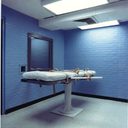
In light of the FBI’s acknowledgement in April that flawed forensic testimony by its expert hair-comparison analysts had tainted at least 268 cases, including 32 death penalty cases, forensic science is coming under increased scrutiny. A commentary in the Boston Review argues that “mounting horror stories,” including instances of crime-lab “corruption and dysfunction, have created a moment of crisis in forensic science.” Referencing “scores of individual cases in which forensic science failures have led to wrongful convictions” and highlighting the wrongful execution of Cameron Todd Willingham in Texas based upon scientifically invalid arson testimony, the commentary questions the continued high degree of confidence accorded forensic science testimony in the courts. A 2009 report by the National Academy of Sciences (NAS) sharply critiqued many of the techniques used by forensic examiners, saying, “Many forensic tests — such as those used to infer the source of tool marks or bite marks — have never been exposed to stringent scientific scrutiny.” Even widely-accepted practices like fingerprint matching had no mechanism for independent confirmation, relying entirely on the examiner’s opinion. Ultimately, the NAS report concluded, “With the exception of nuclear DNA analysis … no forensic method has been rigorously shown to have the capacity to consistently, and with a high degree of certainty, demonstrate a connection between evidence and a specific individual or source.” Yet even DNA evidence can be tainted by faulty practices or intentional malfeasance. Close affiliations between forensic laboratories and police or prosecutors raise concerns of bias. As former FBI investigator Frederic Whitehurst put it, forensic scientists can “run into a sledgehammer” when their findings contradict the theory that prosecutors are trying to advance.
(N. Robinson, “Forensic Pseudoscience,” Boston Review, November 16, 2015.) See Innocence.

